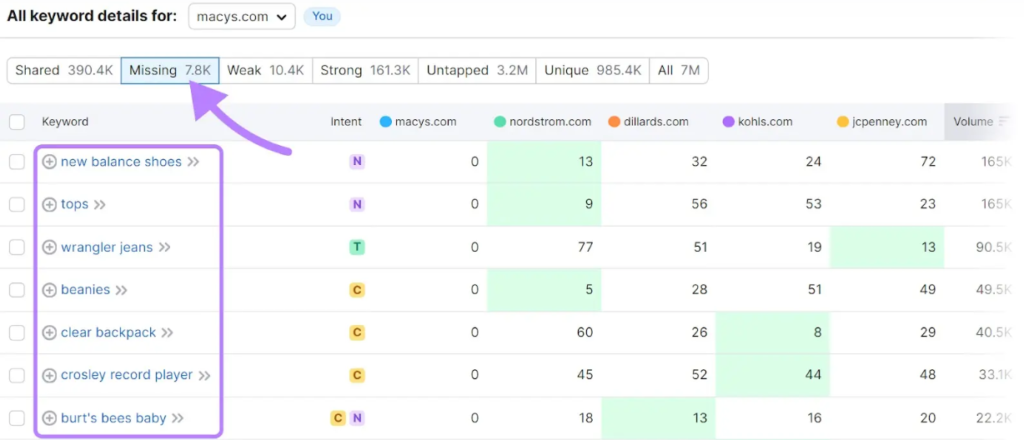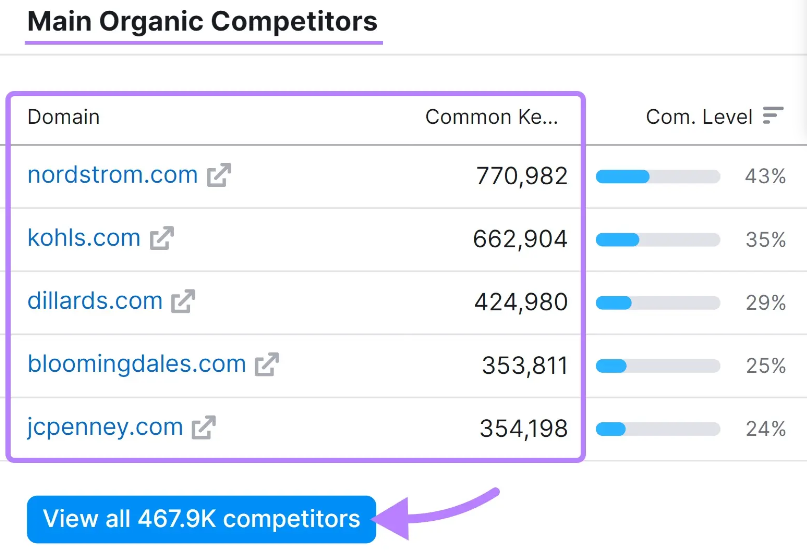When it comes to your online marketing, simply having a presence is a big part of it. Having an engaging presence is better. Having a consistent and engaging presence is best.
By creating content that helps your potential audience with your area of expertise and creates more pathways for people to find you, both you and your audience can benefit — provided that it is truly useful to them and not an absolute drivel that more and more brands are pushing out.
In doing so, you’ll likely end up with some blind spots in topics, media, and audience needs that you’re not addressing. Here’s how to identify these “content gaps,” what to do about them, and how fixing them is beneficial.
The types of content gaps
Image source: mailchimp.com
There are four primary types of content gaps:
- Audience needs: These are questions your audience has or problems that have arisen for them that your brand’s content hasn’t addressed.
- Competitor analysis: This gap is in content subjects where your competitors outperform you by producing more useful content that attracts users to them over you.
- Keyword research & utilization: These are high-potential keywords you haven’t targeted.
- Content format: This is when you’re missing certain formats that engage your audience or might even be preferred by portions of them. This could include any useful media, but the most common are blogs, videos, podcasts, and infographics — it’s worth considering which media might be underserved and how you can take advantage of that.
These gaps are good things to keep in the back of your mind even when you’re not doing formal analysis on them. At the same time, it’s important to take the time to conduct a concrete analysis of your content gaps. Here’s how:
A step-by-step guide to conducting a content gap analysis
The first step is, like with pretty much everything, simply identifying your goals. If you don’t know what you’re trying to achieve with this, how can you know if you will succeed? You have to concretely identify this by setting clear objectives for your content gap analysis and what you build upon those findings — common goals include increasing traffic, improving engagement on your site, or boosting conversions or leads.
Step two: Analyze the content you’re currently putting out.
This means taking inventory of existing content and assessing their relevant performance metrics; common ones include page views, bounce rates, conversion rates, etc.
Luckily, there are some pretty helpful resources for auditing here — Google Search Console allows you to review the highest-performing content sorted by either page or keyword, and GA4 can analyze not just your top-performing pages but how people are engaging with them. This includes how long people are staying on pages, bounce rates, and more. We have a blog post about this that’s a few years old but is still a good resource on how to analyze your output for this step.
Step three: Research potential keywords and the keywords you’re already using.
Image source: semrush.com
This shows you two important things. First, it shows how often people are searching for keywords related to the topics you cover — and, when you’re savvy about this, it shows you what it is about those search terms they want to know more about, so you can better understand user intentions and address them in the work you publish. (As a reminder: You’ll get the most out of your content when you understand you’re not trying to “trick” users into engaging with you, but rather that good content is mutually beneficial[SC1] . This should be intuitive, but some like to take shortcuts. Don’t; you serve users first — the benefits to you are a side effect of being helpful to users.)
Second — and arguably most important: This step shows how people are searching for keywords you aren’t covering.
This is where a huge part of your content gap will be found. Here you’ll gain insight into the audience’s needs that you’re not addressing. That alone is the most basic venue to remedy gaps: What do people want that you aren’t providing? Well, now that you know, provide it!
For many, you’ll also be able to think about your potential audience on a somewhat granular level; in all likelihood, every single person who might be interested in your brand isn’t interested in it for the exact same reasons. In that vein, how can this research help you better understand the different personas that might potentially engage with you, and how can you serve each of those groups as well as possible?
Step four: Analyze your competitors.
Image source: semrush.com
You should identify your primary competitors in general, but doing so is especially necessary for a complete gap analysis. Once you have the main competitors down, then dig into their content strategies.
While there are useful tools for this like SEMrush and Ahrefs, one of the best methods is simply going to your competitors’ sites and just observing yourself. Some things here won’t be quantifiable — the quality of their work, for example — but that doesn’t make those traits less valuable. On the contrary, reducing everything to numbers and only dealing in that metric realm will give you at best a half-understanding of everything, while leaving you with no context for the things that can be quantified.
Step five: Here’s the central step — identify your content gaps.
Image source: searchengineland.com
The other steps are the foundation for this step, and then this step is the foundation for everything else.
After you’ve analyzed what you’re publishing, what your competitors are publishing, and what your potential audience wants, the gaps in these should start to become clear.
What does your audience implicitly want that you aren’t offering? What are your competitors offering content-wise that you aren’t?
These gaps will most likely include primarily subject matter itself but also gaps in media formats you’re providing or gaps in stages in the customer journey that you’re not addressing. As you’ll probably find many gaps in both form and content, prioritize which ones you address based on how impactful it would be for that gap to be filled versus how resource-dependent it is to address. For example, if you notice loads of users are searching for information neither you nor your competitors are addressing, and you could provide help through a written blog post series that takes only five hours per week for, say, six weeks — that’s potentially a bunch of new traffic for minimal resources.
Step six: Develop a content plan to address the previously identified gaps.
We got a bit into that above, but this is intuitively the next step after identifying your content gaps: actually doing something about them.
This step works like pretty much any creative problem-solving process. Brainstorm what could fill those gaps and how, plan out the process for making these pieces of content — including topics, media formats, distribution channels, timelines, etc. — and, just like step one, set measurable goals for what you want to see out of them.
Step seven: Implement your plan!
For both the short- and long-term, we recommend developing an editorial calendar. (You might think you can keep it all organized mentally but, especially if this is a larger team project… don’t bet on it.) If you’d like a more in-depth look at that process, we wrote a two-part series about editorial calendars a bit ago that’s helpful.
Of course, the act of implementing your plan varies depending on the media you’re planning, and the contents contained therein, so how you create it is up to you. We do recommend setting hard deadlines and publication dates; it’s easy to slip otherwise and consistency is key.
Step eight: Promote your content and learn from it all!
This will likely include social media distribution — which you can’t be too reliant on — as well as potential email lists, guest-posting, or cross-promoting with other publications or groups you have a friendly relationship with and other venues.
Then of course, over time you can learn from your results, see what worked and what didn’t, and use that to inform your future efforts.
Best practices for effective content gap analysis
A few tips:
- Don’t get too bogged down into obsessing with what, in the words of Zoolander, is “so hot right now” — but still keep half an eye on general industry trends and audience interests. If you can get a sense of the direction of things and stay ahead of them, it’ll set you up nicely.
- If your business is big enough where there are multiple teams, collaborate with other departments to get their insights. In some instances, you can only do so much without tapping into their knowledge.
- Don’t only rely on quantification or automated tools — but do use them. Resources like SEMrush, Ahrefs, Google Analytics, and Google Search Console can be super insightful when complementing your human-powered analysis.
Overall, doing occasional content gap analysis can give you so much insight into arguably the most straightforward steps you can take to improve your online efforts. You’ll better understand where you’re lacking, what people want, and how you can better serve those needs with quality content that’s mutually beneficial. If you haven’t already added this to your digital repertoire, definitely add it in!








